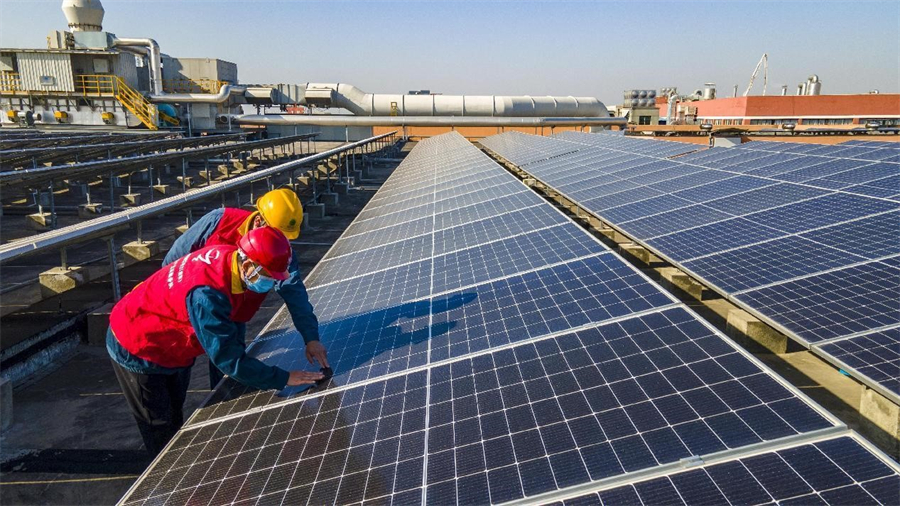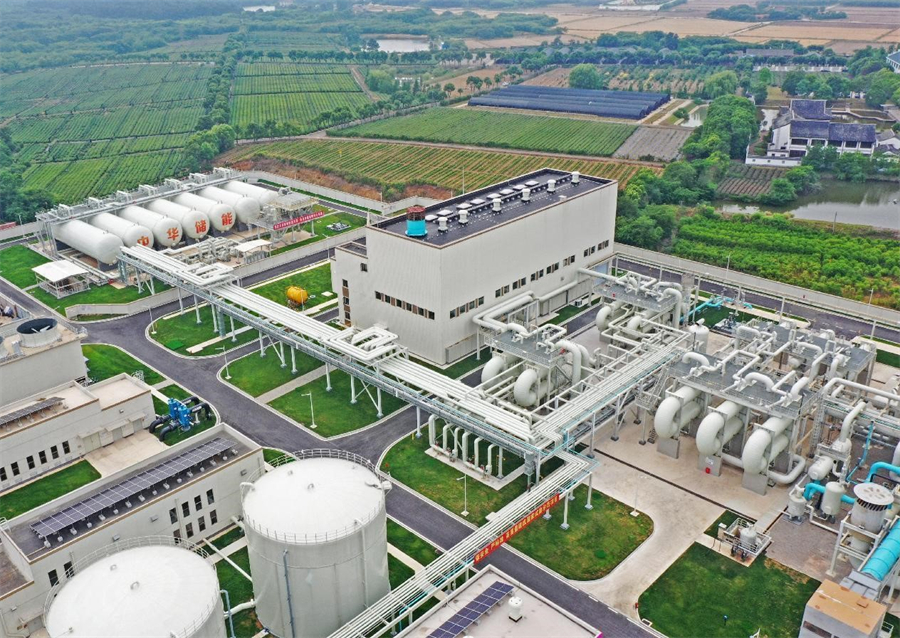China's energy storage industry on fast lane of development
As China works to pursue the "dual carbon" goal, which is to peak carbon dioxide emissions before 2030 and achieve carbon neutrality before 2060, its energy storage industry, as an important pillar for building a new type of power system, is going through a rapid expansion.
According to the China Electricity Council (CEC), as of the end of 2022, the total installed capacity of China's pumped-storage hydroelectricity reached 45.79 million kW, ranking first in the world, and it was expected to exceed 50 million kW by the end of this year. Besides, multiple relevant technologies developed by China were among the best in the world.
The energy density of Chinese lithium-ion batteries for energy storage has more than doubled compared with that 10 years ago and many key materials are now produced domestically.
China has also seen fast development of compressed air energy storage technologies. In the flywheel energy storage sector, the country has developed big-capacity flywheels, high-speed motors, as well as other key technologies. Chinese sodium-ion battery projects are now up-and-coming.
As energy transition picks up speed, China's total installed capacity of new-type energy storage facilities is expected to hit 150 million kW by 2030.
The large-scale development and technological progress of the Chinese energy storage industry have led to a steady reduction in the cost of the application of energy storage technologies.

Employees of the Jindong power supply company under the State Grid maintains photovoltaic panels on the roof of a workshop in a factory in Jindong district, Jinhua, east China's Zhejiang province, Dec. 15, 2022. [People's Daily Online/Hu Xiaofei]
Chen Haisheng, director of the Energy Storage Committee under the China Energy Research Society, told People's Daily that the cost of new-type energy storage in China has been lowered by 10 percent to 15 percent annually on average in the past decade. In particular, the costs of lithium-ion battery and compressed air energy storage have dropped rapidly, and are close to that of pumped-storage.
Jiangsu Higee Energy Co., Ltd. (Higee) in Wuxi, east China's Jiangsu province has adopted a photovoltaic (PV) generation - energy storage system. The system generates electricity with rooftop PV panels in the day and stores low-price electricity during off-peak hours at night, which makes it possible for the system to "feed" the plant at the peak time and significantly reduces the production cost.
"The price of industrial electricity during off-peak hours in Wuxi is only 0.28 yuan ($0.04) per kWh, while that in peak hours is around 1.15 yuan. The PV generation-energy storage system can save 500,000 to 600,000 yuan for the company every year," said Li Xiangchao, an employee of the State Grid Wuxi Power Supply Company.
This is just one of the many scenarios of energy storage. Through integrated development with power sources, grids, and loads, energy storage is expected to improve the utilization of clean energy and the operational efficiency of the power system.
On the side of power sources, energy storage makes it easier for new energy to be connected to power grids, assists the transmission of renewable energy to other regions, and strengthens regulation of conventional power sources.
On the side of grids, energy storage offers peak load and frequency regulation services, enhances the power system's performance in emergency response and failure recovery, improves the safety and stability of the power system's operation and strengthens power supply for regions with weak power supply.

The world's first non-supplementary fired compressed air energy storage power station is put into use in Changzhou, east China's Jiangsu province, May 26, 2022. [People's Daily Online/Xia Chenxi]
On the user side, energy storage can be employed by distributed energy supply systems to improve the quality of energy consumption and lower the cost. Besides, user-end energy storage, charging, battery-swap facilities, as well as intelligent electricity facilities can make users' energy consumption more flexible.
According to statistics released by the China Energy Storage Alliance, 47 percent of the newly built new-type energy storage projects in 2022 were put into use on the grid side, 45 percent on the side of power sources, and 8 percent on the user side.
At present, it has become a consensus of the energy industry to accelerate the large-scale, commercial, and market-oriented development of the energy storage sector.
A 2021 report on the development of the pumped-storage sector said there would be over 200 pumped-storage hydro plants by 2025 in China. By that time, the country's total operational capacity of pumped-storage hydro plants will reach 62 million kW, equivalent to the total installed capacity of 3 Three Gorges Dams.
An official with the National Energy Administration (NEA) told People's Daily that China's total installed capacity of new-type energy storage facilities would hit 30 million kW by the end of 2025, maintaining annual growth of over 50 percent.
According to plans issued by the National Development and Reform Commission, NEA, and other departments, the new-type energy storage industry will be fully market-oriented by 2030.
























